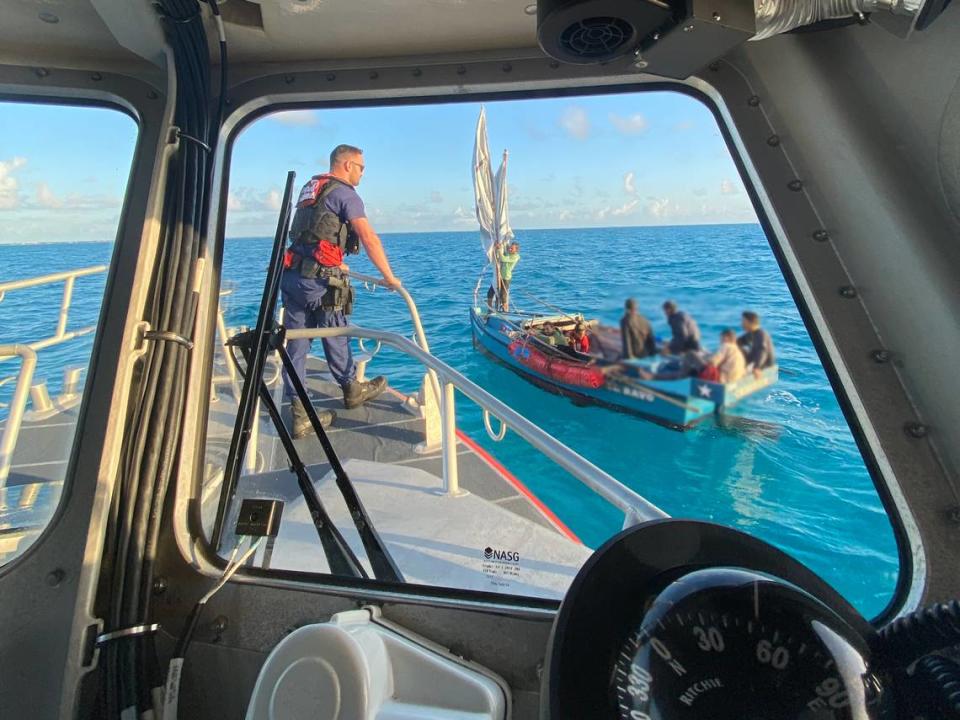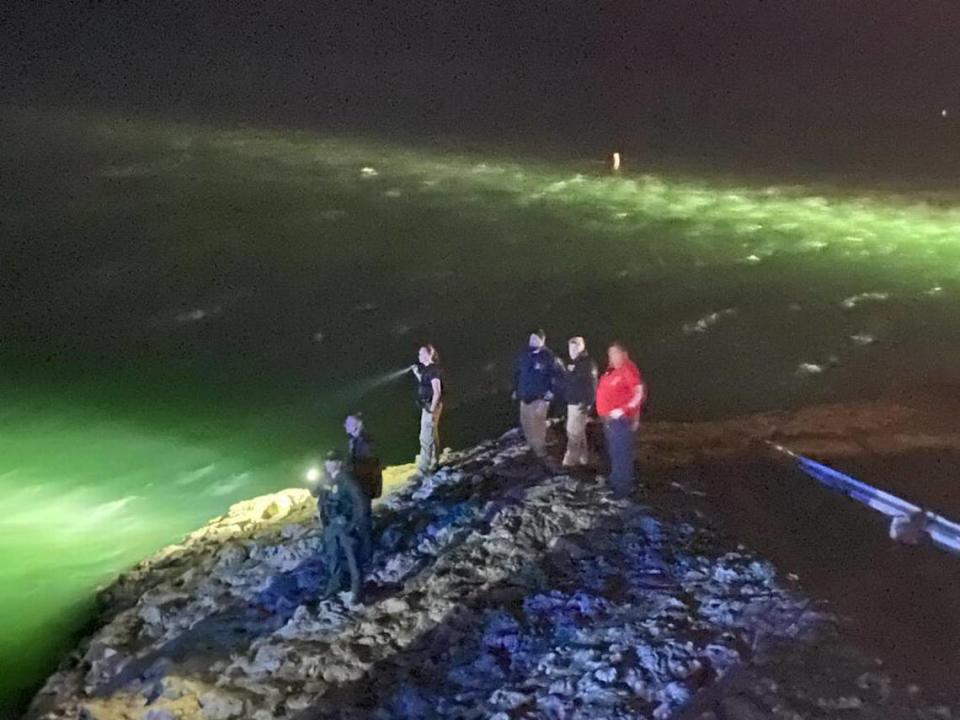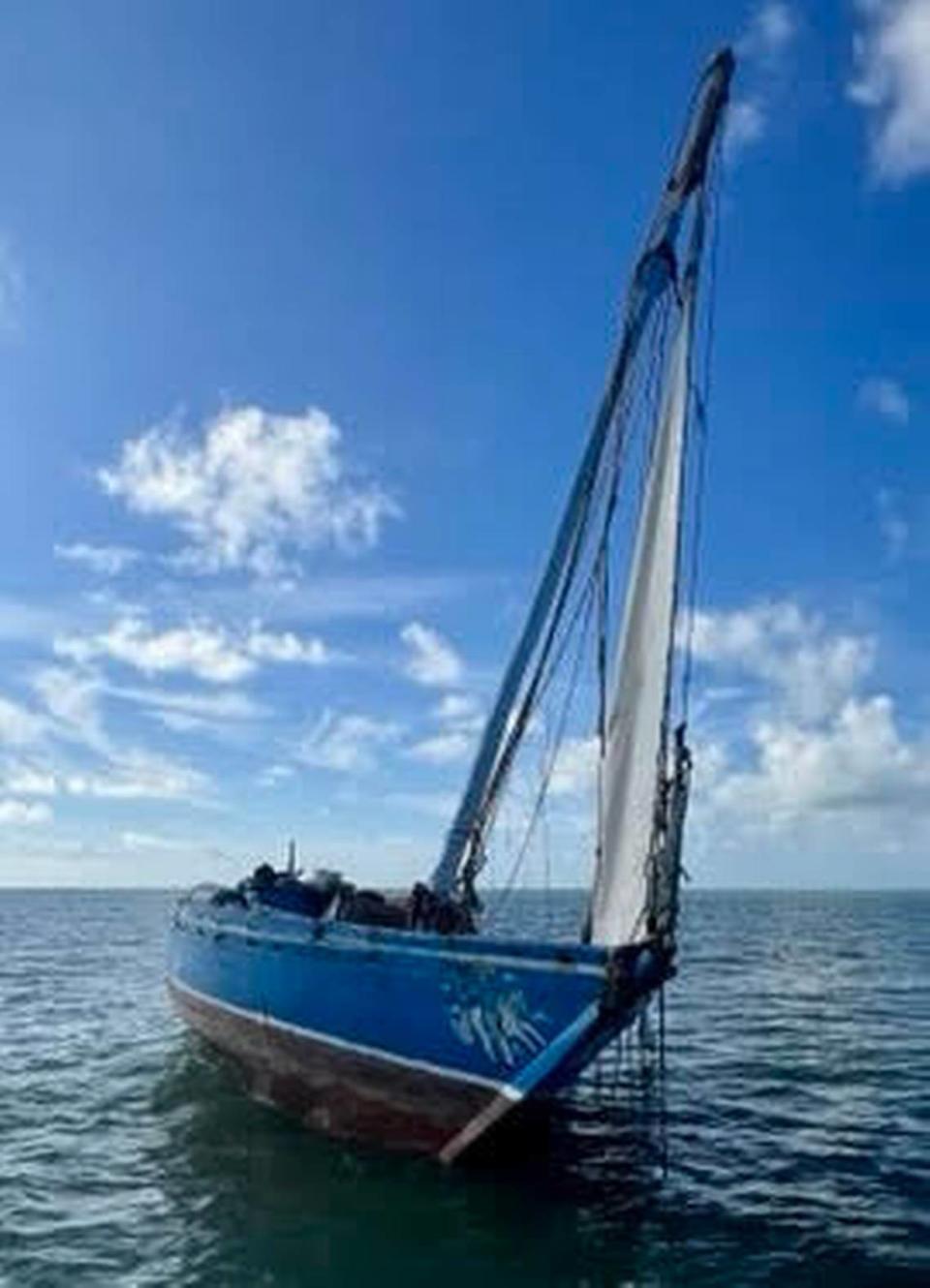What happens to people who die at sea trying to migrate? It falls to the Florida Keys
When people from Haiti and Cuba take to the sea in desperation to reach U.S. shores, they often end up in the Florida Keys, arriving on overloaded or homemade vessels.
Some end up in immigration custody, with their futures up in the air as they’re processed. Others need medical care for exposure or dehydration.
And some don’t make it, drowning toward the end of their perilous journey across the sea, so close to their promised land.
Since the new wave of migrants started nearly two years ago, the Florida Keys have felt the stresses of it all. Paramedics, hospitals, cops — the first responders who usually deal with small-town island life — have had to respond to an international migration crisis. They’ve chased down fleeing people, treated their health issues, comforted them on land.
Now, the local morgue is also feeling the pressure, with increasing numbers of dead. They are taken to the Monroe County’s Medical Examiner’s Office, the department that processes bodies along the island chain.
How much is the body count rising?
In 2021, for instance, the District 16 Medical Examiner’s Office handled three bodies of migrants who died off the Keys. In 2022, with December still to go, the office has processed 20 confirmed migrants and one person who is likely part of a large group of people from Haiti who arrived off Islamorada.

“It is a lot. We do have enough room here though, in the event we get a decent size group at some point,” said Tiffany Fridley, director of operations at the Keys Medical Examiner Office, which typically investigates 170 to 220 deaths annually, some of them tourists who die while diving.
The Keys office has nine people confirmed to be Cuban migrants in its morgue as of the last week of November, Fridley said. Of those, three men from a migrant arrival in August and four women from an arrival last month have yet to be identified, she said.
There are two other people, also Cuban migrants, who’ve been identified, but their families haven’t been told by the Coast Guard, Fridley said.
“Once the decedents are identified and the [next of kin] are notified by the investigating agency, they are usually quick to make arrangements,” she said.

Deaths at sea
The Coast Guard and other federal agencies track migrant landings, interceptions at sea and deaths by the fiscal year, which begins Oct. 1 and ends at the end of September. During the last fiscal year, deaths at sea spiked from five in 2021 to 65 people in 2022, said Petty Officer Nicole Groll, a Coast Guard spokeswoman.
A large portion of that count is people who disappeared when their migrant boat capsized and are now presumed dead after the Coast Guard eventually called off searching for survivors. But searches do yield bodies, too. In January, five bodies were recovered after a migrant smuggling boat en route from the Bahamas to Florida turned over about 40 miles east of Fort Pierce Inlet.
One man from that party was found alive sitting on the overturned hull of the vessel, but the 34 others on board were never found.
Since October, 13 people have died along the Florida Straits trying to reach the U.S., Groll said.
Windley Key death
The Keys medical examiner also has the body of a man found off Windley Key in Islamorada more than a week ago, three days after a group of nearly 200 people from Haiti arrived off the Upper Keys in a migrant sailboat — and in almost the same location about 20 from that group jumped in that water to avoid capture by Coast Guard, police and federal agents.

However, officials have not confirmed that the man came with that migrant group.
“Unfortunately, it is still an active investigation, and the male remains unidentified as of right now. We can’t confirm if he was, indeed, a Haitian migrant or not,” Fridley said. “That information should be forthcoming as the investigation proceeds. The only information I can really give you is that it was a black male that was recovered.”
Deaths rise as arrivals continue
The rise in deaths coincides with a rise in migration from Cuba not seen in nearly a decade because of deteriorating political and economic conditions.
More people are willing to risk their lives at sea rather than to continue living under increasingly oppressive conditions and despair, Sebastian Arcos, associate director of Florida International University’s Cuban Research Institute, told the Miami Herald
“Cuba is under the worst economic crisis since 1959, generated by the sheer incompetence of the regime and its reluctance to engage in meaningful reforms, economic or otherwise,” Arcos said. “The repression unleashed after the massive public demonstrations in July 2021 is a major contributor to the desperation.”
The Coast Guard in fiscal year 2022, which ended in September, picked up 5,396 people at sea who were on their way to Florida. That’s the highest number in eight years. At the pace Cuban migrants are being intercepted so far since October — 2,755 — that number could triple by next September.
“The regime’s political legitimacy has collapsed, and Cubans know they have little to expect from them. Few have the resources to take the perilous and expensive trek through Central America to the U.S. border, where they have a better chance to be allowed in,” Arcos said.
“The trip across the Florida Straits is indeed dangerous, but shorter and less expensive. As long as the regime continues to hold on to power while refusing to engage in meaningful reforms, the exodus will continue to grow.”
Meanwhile, the rush of migrants from Cuba and Haiti shows no signs of slowing. On Thursday, a group of 25 people from Cuba landed on Sombrero Beach in Marathon on a makeshift boat made from welded-steel fuel drums, said Adam Hoffner, division chief for U.S. Customs and Border Protection’s Miami sector.
Armed gangs massacre Haitians and torch town north of the capital
Although not as many boats from Haiti arrive in South Florida, the ones that make it carry dozens, and sometimes hundreds of people. That country is seeing its largest exodus since the early 2000s, prompted by not only a dire economic and political climate, but also from a rise in extreme gang violence and fuel shortages.
Local resources stretched
On the ground in the Keys, the teams of people that initially respond to migrant landings are usually Monroe County sheriff’s deputies or Florida Fish and Wildlife Conservation Commission officers who have to pull themselves away from their daily work to wait with the new arrivals, look for ones who run away or tend to those injured or ill from their journey.

It is taking a toll on first responders who also need to answer the calls of traffic crashes on the Overseas Highway, sick tourists, and Keys residents who report crime.
“Each landing requires resources being diverted from other critical missions and require sometimes many officers depending upon the number of migrants, their cooperative or less than cooperative demeanor, as well as if they are grouped together or running through citizens’ properties,” Monroe County Sheriff Rick Ramsay said, adding that 911 dispatchers are “inundated” with calls from residents when migrants arrive on shore.
“MCSO has to sit and wait with the migrants for long periods of time until the federal government arrives to take over,” Ramsay said. “All of the landings are costing taxpayers a lot of money, which is not reimbursed by the government.”
The situation is also creating environmental and navigational hazards on the water as a result of the migrant boats that are arriving faster than they can be disposed of, Ramsay said.
“These boats remain for long periods of time and at times citizens have to handle the burden and expense themselves,” Ramsay said. “The government will not call this mass migration, but when migration is up to over a 600% increase, we can call it a mass migration.”


 Yahoo Movies
Yahoo Movies 
